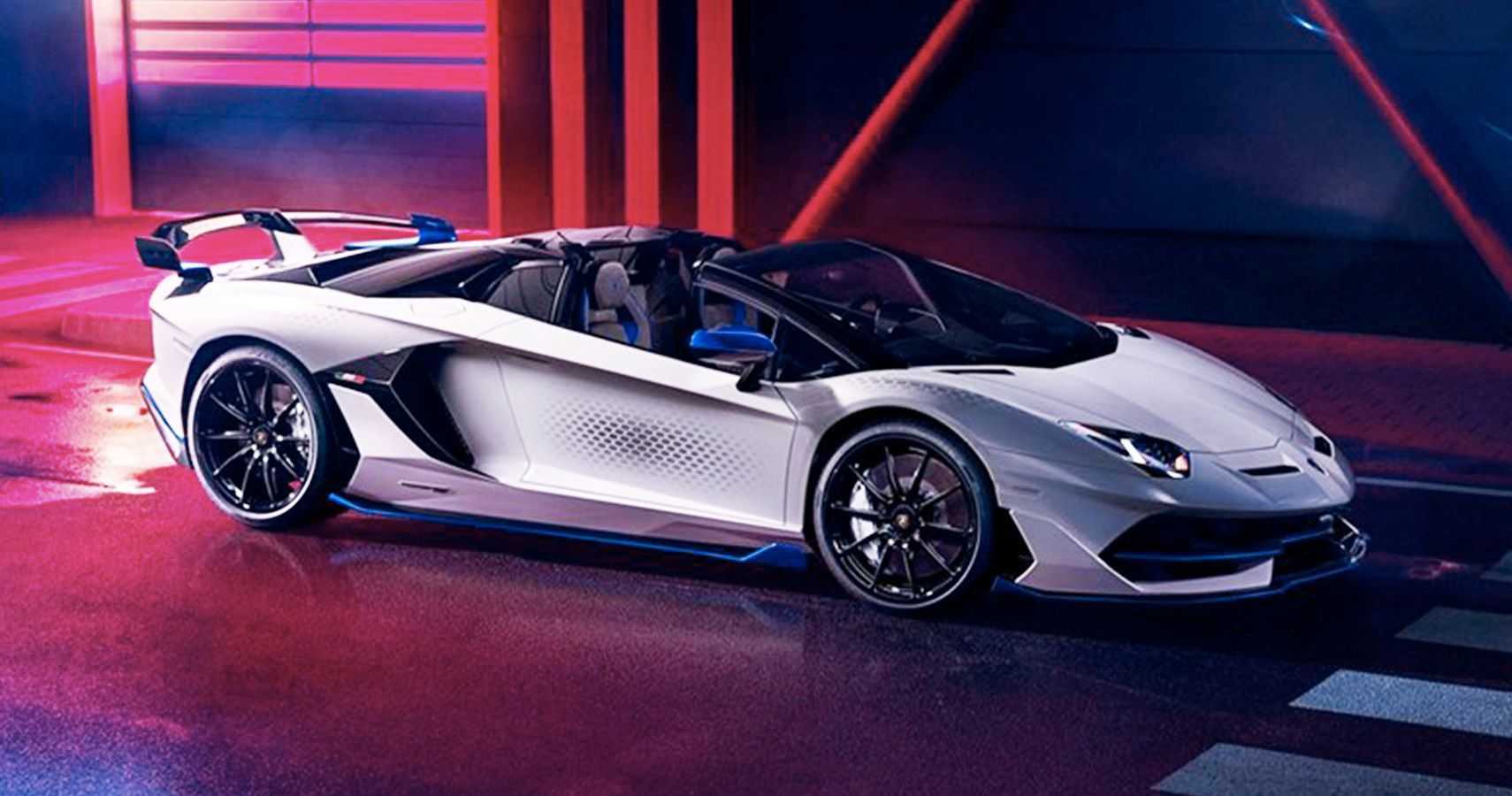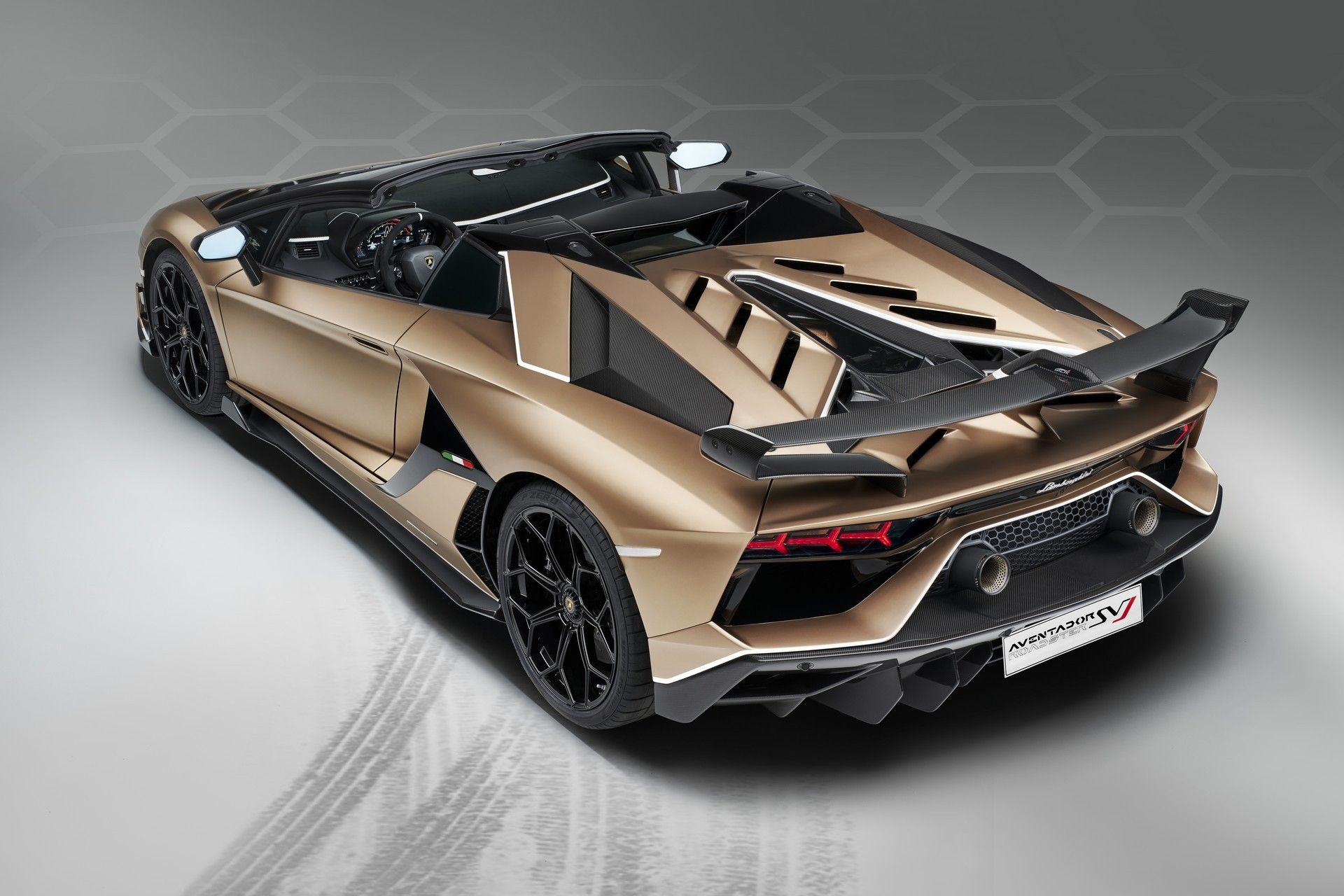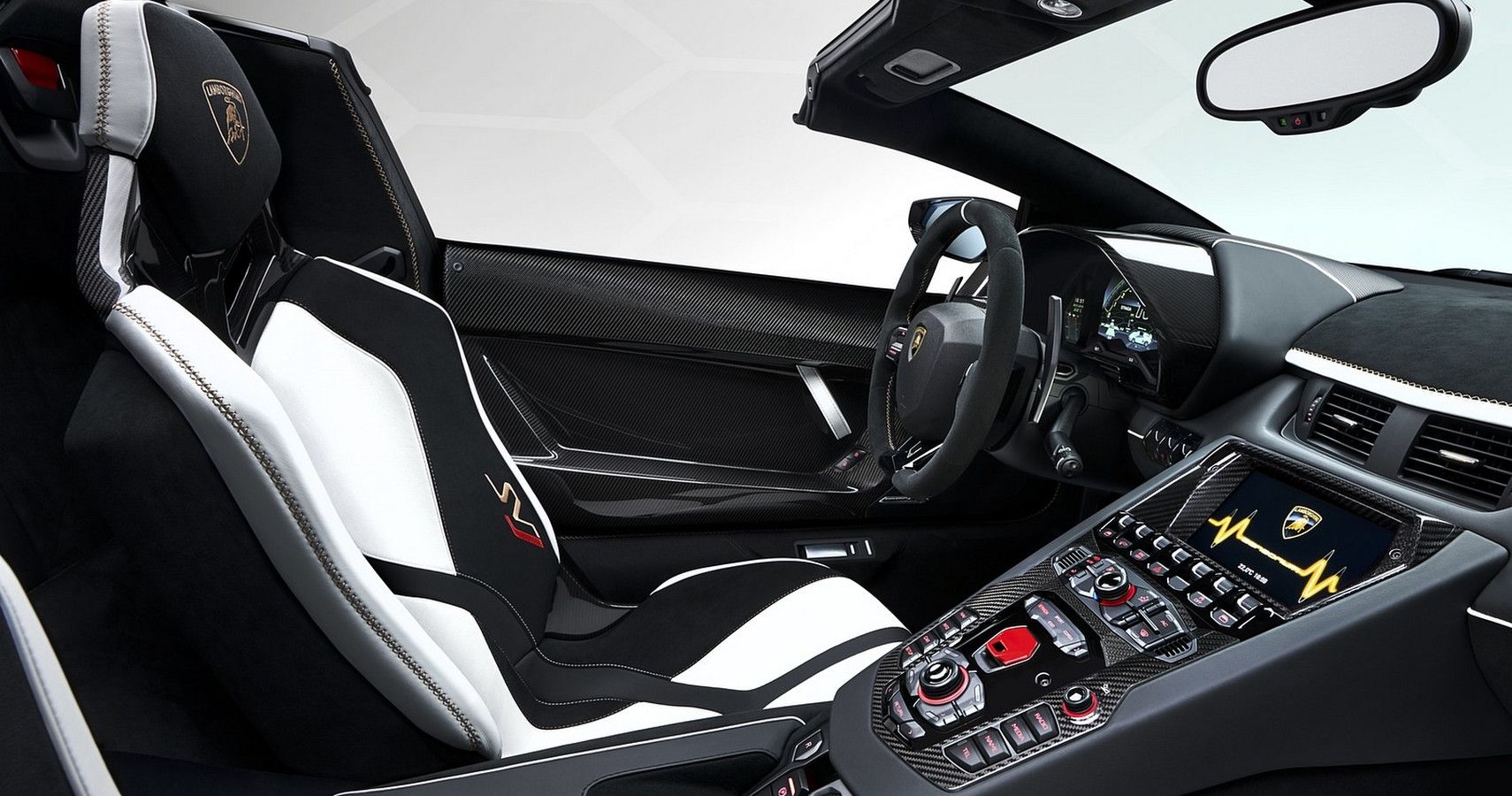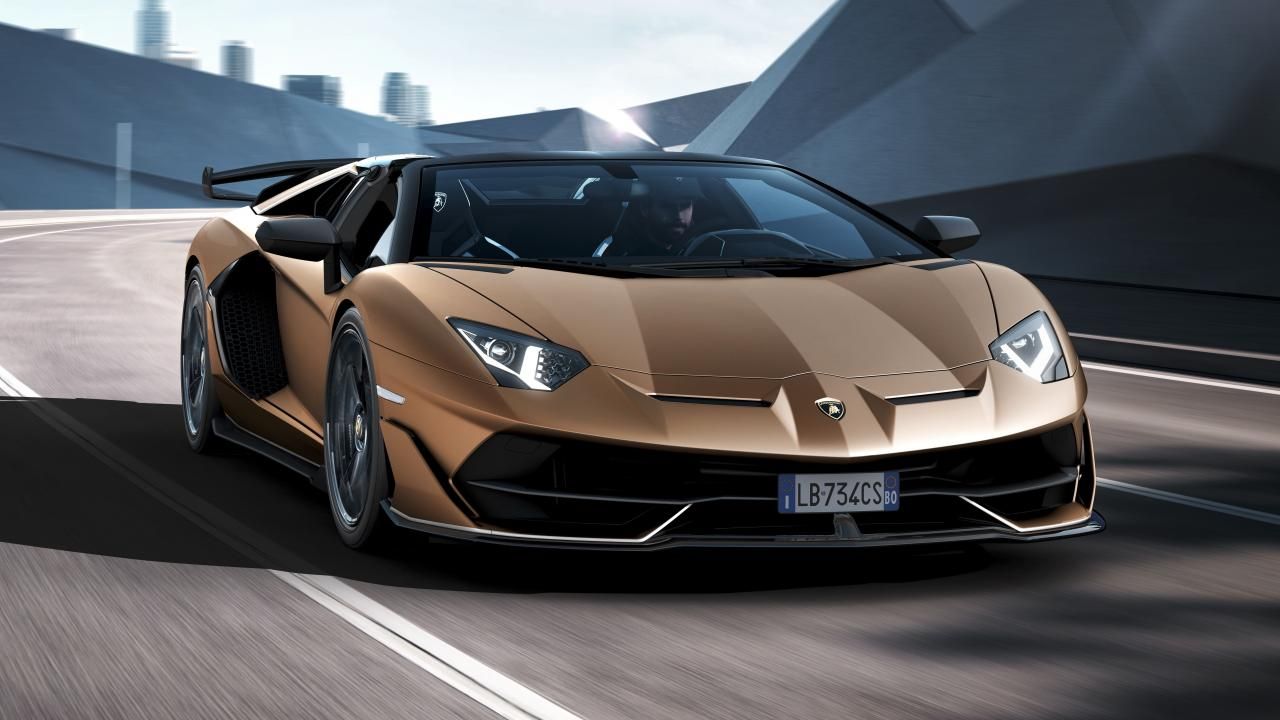Lamborghini flagships have always had an unmistakable road presence thanks to their crazy looks and boisterous engines. This wasn’t always the case with Lamborghinis of the past. Back in the day, Lamborghini wasn’t just about crazy looks since Ferruccio wanted a direct competitor to the Ferrari Berlinettas; therefore comfort played a vital role in their design. Lo and behold, the Lamborghini 350 GT took center stage with its Ferrari-rivaling traits.
It wasn’t until the Miura that Lamborghini shifted their entire ethos to flamboyance. A few years later, the Countach took the idea and turned it to eleven. Fast forward a couple of decades and we’re at the Aventador. In 2018 a dynamically superior Aventador was unveiled; the Super Veloce Jota. The Aventador SVJ is currently the most extreme Aventador on sale, outperforming its older brother, the SV. A year later the SVJ Roadster was revealed to the public.
With a base price of $576,000, the Lamborghini Aventador SVJ Roadster is far from being the one for errands. This here is something special, a rewarding splurge for the wealthy. Here’s a closer look at the most advanced open-top Aventador currently on sale.
Aventador SVJ Roadster: The Last Naturally Aspirated V12 Lamborghini
Much like the Aventador LP-700, the SVJ uses a naturally aspirated V12, although in a different state of tune. The engine really isn’t all that different from the SV. The 6.5-liter engine produces 740 horsepower and 509 lb-ft of torque in the SV while the SVJ makes 759 horsepower and 531 lb-ft. Transmission is the rather clumsy 7-speed single-clutch gearbox albeit with revised shift times in the SVJ.
Aside from having a slightly powerful motor, the significant mechanical difference between the two is the rear-wheel-steering and weight savings. While the SV was a good 50 kilos lighter than the LP-700, the SVJ takes it further with 100 kilos over the SV. All-wheel-drive is the standard platform and despite the SVJ’s power advantage, both came with similar 0-60 times of 2.8 seconds. Lamborghini has confirmed that the Aventador’s successor will have some form of hybridization and the V12 in the SVJ Roadster would be the last to be naturally aspirated.
Aventador SVJ Roadster: Exuberant Styling Inside And Out
The SVJ’s interior is unique but not all that different from the SV it replaced. Both are exactly the same apart from “SVJ” replacing the “SV” embroidery. Another addition to the interior is the “Ego” drive-mode setting. Introduced in the Aventador S, Ego is Lamborghini’s version of a custom driving mode wherein preferences can be individually selected. The interior is beyond striking and with the Roaster’s open-top experience, the drama is only-ever amplified. That said, from a general perspective the SVJ”s interior is starting to look a bit dated and shows how old the Aventador platform is in this day and age of touchscreens and gesture controls.
However, that’s not the case with the exterior. It’s anything but obsolete. The SVJ’s sumptuous design is carried over to the Roadster with not much loss of character. If anything things have only improved with more sculpture emphasizing the looks especially from the B-pillars towards the rear. The SVJ is all about aerodynamics. While the SV was technically a lot better at managing airflow than the LP-700, it had a few shortcomings. Firstly, the SV was a bit light at the front and used to lift at higher speeds.
The SVJ takes care of that with intakes that resemble a Formula One “S-duct.” Along with this, the SVJ incorporates the ALA system that debuted in the Huracan Performante. Part of the ALA package was the ridiculously sculpted rear wing. Visually, the SVJ had broader air intakes and features a high-mounted exhaust as opposed to the lower exit unit in the SV. The revised exhaust placement meant shorter pipes can be used which in turn leads to better combustion and faster exhaust release.
Aventador SVJ Roadster: Unmatched Driving Experience
This is where the SVJ feels like an entirely different car. If you recall the Nurburgring record set by the SVJ, it shows how much of a leap it was over the SV. That’s not to the SV was any bit slow. The Aventador Super Veloce was only a few seconds off the million-dollar Porsche 918 Spyder, a member of the holy trinity. The SV was a brilliant car to drive on a track but was dreadful in and around the city.
For one, the horrendous turning radius meant taking a wider line and three-point turns. The SVJ on the other hand felt a lot more useable thanks to the rear-wheel-steer. Both of them are a joy to your senses once under load. We personally prefer the rather melodious tone of the SV as opposed to the raucous SVJ. In any case, you won’t be disappointed is the key takeaway. The experience is only amplified without the roof and the drama of an angry V12 is an aural pleasure that is second to none.
Sources: YouTube, Top Gear





